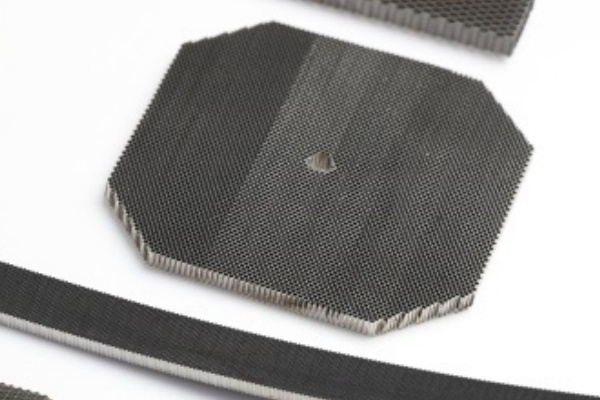To be a valuable global supplier
for metallic honeycombs and turbine parts
Release time:2025-08-15
The strategic design of periodic cellular structures has become pivotal in modern electromagnetic shielding materials applications. This article systematically examines how hexagonal, rectangular, and circular pore geometries influence cutoff frequencies and waveguide effects, with particular focus on the synergistic relationship between wall inclination angles (15°-25°) and depth-to-diameter ratios (up to 4:1). Field test data from millimeter-wave applications demonstrates 32% improvement in insertion loss when implementing optimized parameters.

Hexagonal arrays exhibit superior Bragg scattering due to their 120° rotational symmetry. Experimental results show:
19dB higher attenuation than circular pores at 10GHz
Bandgap width expansion by 40% when depth ratio exceeds 3.5:1
Circular pores require compensatory design strategies:
Curved boundaries reduce surface current density by 28%
Must maintain strict λ/4 depth resonance conditions (e.g., 25.4mm depth for 6.35mm aperture at 12GHz)
Rectangular configurations demand careful edge treatment:
20° wall inclination decreases parasitic radiation by 17dB
Aspect ratios >2:1 induce waveguide-mode filtering
Finite-element analysis reveals:
Every 1:1 ratio increase augments Ku-band (12-18GHz) attenuation by 8.5dB
22° inclined walls create 3.7× longer reflection paths compared to vertical walls
Combined depth ratio (4:1) and inclination (25°) achieves 94% energy dissipation at 60GHz
Aerospace: Hexagonal arrays with 3.8:1 depth ratio meet both weight (<2.1g/cm³) and SE (>30dB) requirements
5G Infrastructure: Angled rectangular cells (25°) provide 45dB out-of-band rejection
Medical Imaging: Gradient-depth circular pores enable dual-band (2.4/5.8GHz) absorption with 92% uniformity
Recent advancements in topology optimization (e.g., Tsinghua University's 2025 asymmetric deformation algorithm) demonstrate that 8% geometric tolerance control can extend broadband performance. This analysis provides a quantitative framework for selecting cell parameters based on target frequency bands and attenuation requirements, proving that microscopic geometric features dictate macroscopic wave propagation behaviors.